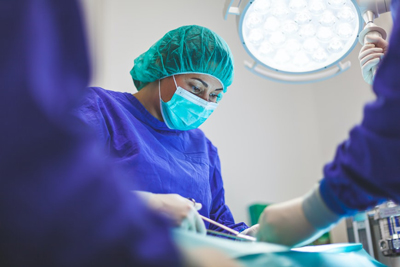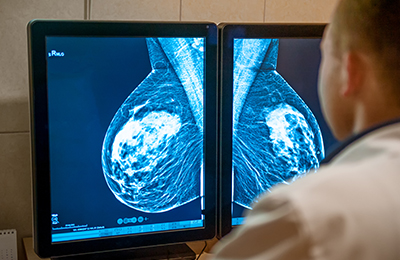

5 Mammogram Start-ups that are Revolutionising Breast Cancer Detection.
According to National Breast Cancer Foundation, 1 in 11 women in Europe will develop breast cancer in their lifetime. Early detection is crucial because individuals diagnosed with breast cancer at a localized stage have a 5-year survival rate of 99%.
The present standard for breast cancer screening is examining mammograms. This can be time-consuming, with each analysis requiring manual examination. And even though there are a vast variety of screening programmes worldwide, the analysis of mammograms is impacted by high percentages of false negatives and false positives.
With an increasing necessity to improve existing technologies, it is crucial to look out for developments within the mammography market. That is why I wanted to talk about 5 mammogram start-ups that are revolutionising the industry. Understanding why both hardware and software companies are changing the way mammography is seen and delivered throughout hospitals to give patients the best possible care.
Screen Point Medical
ScreenPoint Medical is an AI technology company developing improved image recognition and machine learning software to enhance early detection of breast cancer.
The product, Transpara, concentrates on early detection. It provides radiologists with dependable deep learning AI algorithms which aim to enhance mammography reading accuracy. With improved precision and decrease in false positives, Transpara seeks to reduce needless treatments, patient anxiety and supplementary costs.
ScreenPoint Medical has so far raised $28 million in a Series C financing. The funding will be employed by the business to speed up the commercial growth of the company’s Transpara AI software.
Therapixel
Similar to Transpara, MammoScreen is an AI-based software that helps with detecting and qualifying suspicious tissues that are prone to being cancerous.
MammoScreen was developed by Therapixel, one of the top French software companies specialising in AI applied to medical imaging.
Using Deep Learning technologies, the algorithm is able to detect cancer lesions on cases that were formerly interpreted by breast radiologist specialists and approved when required by a biopsy. The technology aims to allow radiologists with increasing workloads to interpret benign cases in less time.
Mammoscreen just received the CE clearance and is now on sale in Europe.
Hera-MI
The third company I want to talk about is Hera-MI. The start-up has developed Breast-SlimView, a patented clinical decision support system for 2D/3D mammography.
Breast-SlimView offers advanced reading assistance where only appropriate and relevant data is shown. With this technology, radiologists can look over potentially suspicious regions much quicker.
The technical procedure of the patent involves concealing healthy areas of the breast. Breast-SlimView’s algorithm identifies and eliminates all regular physiological regions (vessels, glandular tissue, fatty tissue and mammary gland) and substitutes them with artificial fat.
Micrima
The next company that I want to talk about is Micrima. They developed MARIA, which is a breast imaging system. It was created as a reaction to the increasing demand for a breast scanning system that is successful in all tissue types whilst also being painless and safe.
The overall scanning period of a breast is less than one minute and the image is generated in less than five minutes. The information is then reassembled prior to being submitted to the clinician as a 3D volume.
The MARIA is based on radio wave technology. It delivers new diagnostic data in dense tissue without compressing the breast or ionising radiation exposure to the patient. In recent trials, MARIA has been able to locate areas that relate to invasive breast cancer as indicated by biopsy and histology. However, the MARIA system is still awaiting FDA approval.
AB-CT
The last start-up I want to talk about is AB-CT. Their product, Nu:view, is the world’s first breast CT scanner to use spiral CT technology. It helps radiologists make dependable judgements and has been built specifically with the maximum level of patient comfort in mind.
What differentiates Nu:view from other start-ups in the industry is the outstanding image resolution combined with a low radiation dose and speedy scan intervals. To acquire the best viable image quality whilst maximizing radiation dose efficiency, the sensor utilizes single photon-counting technology.
With the CE marking for Nu:view in place, the scanner is now used on patients at university hospitals and radiology practices in Europe.
What will happen next?
The global mammography market is set to achieve substantial momentum in the forthcoming years. And there is no surprise why. The continuing advancements in breast cancer detection technologies alongside the growing awareness regarding premature detection of breast cancer are becoming the new standard for the industry.
What’s inevitable is that AI-based hardware and software technologies will be prevalent. It is going to be intriguing to observe how these technologies develop further and the impact that they are going to have on the mammography industry.
Interested in discussing these pioneering start-ups in some more depth? Get in touch with me at hannah.nicholson@charltonmorris.com.
Recommended.

What Does Consumer Neurotech Innovation Mean for the Medical Device Industry?
Integrating systems into the human brain to control our everyday devices may seem very ‘Black Mirror’, but thanks to modern neurotechnology it's quickly becoming reality. Click to find out more.

How to Master Reimbursement in Medical Devices & Biotech.
In this live webinar, hosted by CM Medical, we went in search of expert reimbursement advice - speaking to Deborah Rizzi and Steven Haken of Odelle Technology.

How to Stand Out in a Saturated AI & Medical Imaging Market.
We asked an expert at an innovative medical imaging start-up about how they had overcome this challenge. Click now and listen to what they said.

Comments.